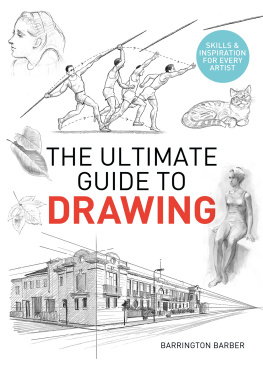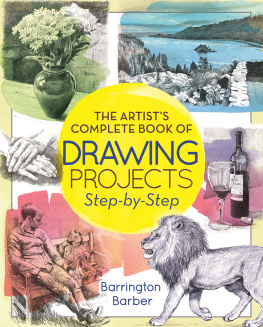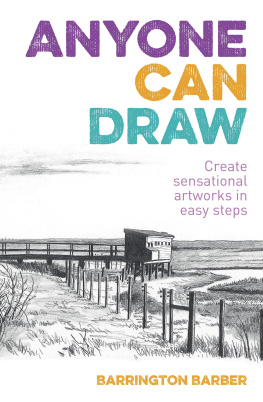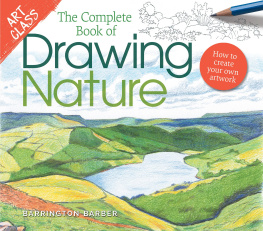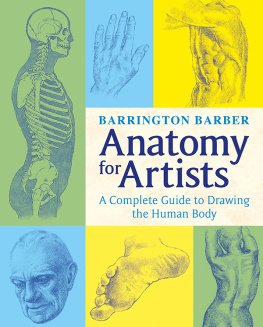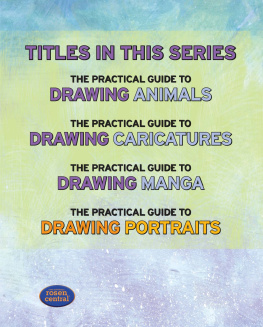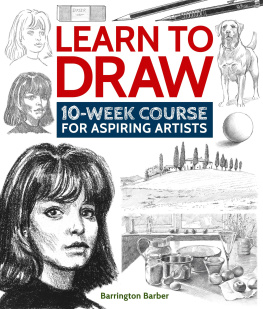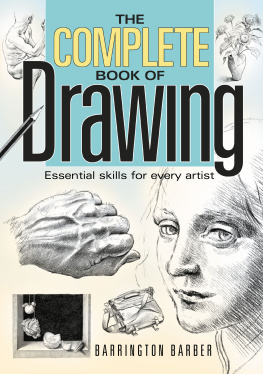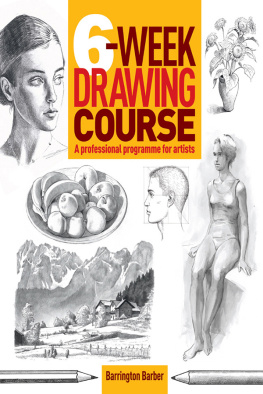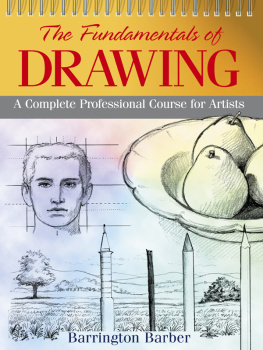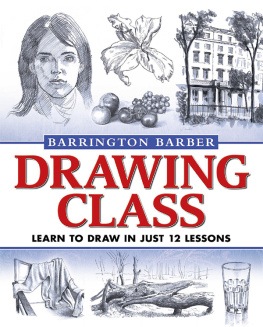Barrington Barber - Drawing Landscapes: A Practical Course for Artists
Here you can read online Barrington Barber - Drawing Landscapes: A Practical Course for Artists full text of the book (entire story) in english for free. Download pdf and epub, get meaning, cover and reviews about this ebook. year: 2018, publisher: Arcturus Digital Limited, genre: Home and family. Description of the work, (preface) as well as reviews are available. Best literature library LitArk.com created for fans of good reading and offers a wide selection of genres:
Romance novel
Science fiction
Adventure
Detective
Science
History
Home and family
Prose
Art
Politics
Computer
Non-fiction
Religion
Business
Children
Humor
Choose a favorite category and find really read worthwhile books. Enjoy immersion in the world of imagination, feel the emotions of the characters or learn something new for yourself, make an fascinating discovery.
- Book:Drawing Landscapes: A Practical Course for Artists
- Author:
- Publisher:Arcturus Digital Limited
- Genre:
- Year:2018
- Rating:4 / 5
- Favourites:Add to favourites
- Your mark:
- 80
- 1
- 2
- 3
- 4
- 5
Drawing Landscapes: A Practical Course for Artists: summary, description and annotation
We offer to read an annotation, description, summary or preface (depends on what the author of the book "Drawing Landscapes: A Practical Course for Artists" wrote himself). If you haven't found the necessary information about the book — write in the comments, we will try to find it.
Drawing Landscapes: A Practical Course for Artists — read online for free the complete book (whole text) full work
Below is the text of the book, divided by pages. System saving the place of the last page read, allows you to conveniently read the book "Drawing Landscapes: A Practical Course for Artists" online for free, without having to search again every time where you left off. Put a bookmark, and you can go to the page where you finished reading at any time.
Font size:
Interval:
Bookmark:
A practical course for artists
Barrington Barber

Landscape what do we mean by this word? It has been in use for a few hundred years, and is understood to mean the picture of a large area of land viewed from a specific place. This fairly generalized description is further adjusted or defined by such terms as urban or rural, industrial or pastoral, or even idyllic or fantastic, giving a more conceptual approach to the fact of some depiction of a particular landform by an artist, photographer or filmmaker for our interest.
Most people tend to think of the landscape as the particular countryside with which they are most familiar. Given that most people inhabit towns and cities, rarely is this familiar scene somewhere we live. The word landscape, therefore, has idyllic connotations. Ask most people and they will describe an atypical place where people, industry and the practical realities of life in the 21st century are not in evidence. For the purposes of this book, we shall be taking a rather broader definition and thus examining a great variety of views of the landscape, including where we actually live and not just those areas of unspoilt countryside that are usually considered to be the only places worth recording. We shall look at many places that are not easy to get near, even without a sketchbook, as well as imaginative versions of landforms that have never actually existed. Landscape art is usually thought of, wrongly, as being a topographically accurate portrayal of an area of land. This is a very limiting way of viewing the genre. Most landscape artists manipulate what they see in front of them, especially in its details, to produce a picture that fits their vision. So be prepared for some surprises, especially if you have not yet practised this form of picture-making to any great extent.
By attempting landscapes you will be following a long tradition of famous artists who produced some of the most powerful and beautiful works of art ever seen. Many of these artists found their inspiration in the patterns of daily life going on around them. You can do the same by looking for subjects in your neighbourhood it really is not necessary to travel widely to find scenes worthy of your attention. Observe the day-to-day background of your life and you will find plenty to take your interest and invigorate your imagination.
As with the other titles in this series, we start by looking at basic approaches and explaining the first steps you will need to be mindful of as you embark on this area of drawing. No matter where you are in terms of your artistic development, I hope you find all aspects of this book useful and thought-provoking.
Landscape is what we see all around us, wherever we are. It can be a view of an open area of countryside or town. When tackling a landscape the artists first task is to select a view, to decide on how much of that view to show, and from which angle. Complementary with this selection process is analysis of the proportion and organization of the shapes evident within your landscape and how these may be clarified or emphasized. In the next few pages you will find examples of selection and analysis which you can use as building blocks and take with you into the sections that follow.
Producing landscapes, in any medium, is an excellent pursuit. Apart from getting you out into the world and helping you to appreciate its beauties and structure, it calms the mind. As you draw and observe, a certain detached acceptance of what is there in front of you takes over. It is also fascinating to discover ways of translating impressions of an outside scene into a two-dimensional set of marks on the paper. Whether or not you share some of the experience of your observation with others, it is a truly beneficial activity.
To begin to draw landscapes, you need a view. Look out of your windows. Whether you live in the countryside or in the town, you will find plenty to interest you. Next go into your garden and look around you. Finally step beyond your personal territory, perhaps into your street. Once we appreciate that almost any view can make an attractive landscape, we look at what lies before us with fresh eyes. The two views shown here are on either side of my house.

In this outside view of the garden, behind the fence can be seen the roof of a neighbours house and some trees growing up in the next door garden. In the corner of my own garden there is a small shed with two fir trees growing in front of it with a large log at their foot. The flowerbed to the right is full of plants, including a large potted shrub, with ivy growing over the fence. Closer in is the edge of the decking with flowerpots and a bundle of cane supports leaning against the fence. A small corner of the lawn is also visible. The main features in this view are a fence, two trees and a garden hut.
The drawing below is of the view from my front gate. All the houses in my road have front gardens and there is a substantial area of trees, shrubs and grass before you reach the road proper. We see overhanging trees on one side and walls, fences and small trees and shrubs on the other, creating the effect of a tunnel of vegetation. The general effect of the dwindling perspective of the path and bushes either side of the road gives depth to the drawing. The sun has come out, throwing sharp shadows across the path interspersed with bright sunlit splashes. The overall effect is of a deep perspective landscape in a limited terrain.
One way to get a better idea of what you are going to draw when you attempt a landscape is to use a frame. Most artists use a frame at some time as a means of limiting the borders of their vision and helping them to decide upon a view, especially with large landscapes.
In the first example below a very attractive Lakeland view has been reduced to a simple scene by isolating one part of it. With landscape drawing it is important to start with a view you feel you can manage. As you become more confident you can include more. You will notice how the main shapes are made more obvious by the framing method.

By cutting out a rectangle of card not much larger than 4 inches by 5 inches (10 x 13 cm) and holding it up against your chosen landscape you can begin to control exactly what you are going to draw. Move it closer to your eyes and you see more, move it further away and you see less of a panorama. In this way you can isolate the areas that you think will make a good composition and gradually refine your choice of image.

This rather more sophisticated frame, consisting of two right-angled pieces of card, enables you to vary the proportion of your aperture and allows greater scope for variation.
At some point you will have to decide how large your picture is going to be. In the beginning you may only have a small pad at your disposal, and this will dictate your decision. Starting small and gradually increasing the size of your picture is advisable for the inexperienced, but you will quickly get beyond this stage and want to be more adventurous.
Font size:
Interval:
Bookmark:
Similar books «Drawing Landscapes: A Practical Course for Artists»
Look at similar books to Drawing Landscapes: A Practical Course for Artists. We have selected literature similar in name and meaning in the hope of providing readers with more options to find new, interesting, not yet read works.
Discussion, reviews of the book Drawing Landscapes: A Practical Course for Artists and just readers' own opinions. Leave your comments, write what you think about the work, its meaning or the main characters. Specify what exactly you liked and what you didn't like, and why you think so.


